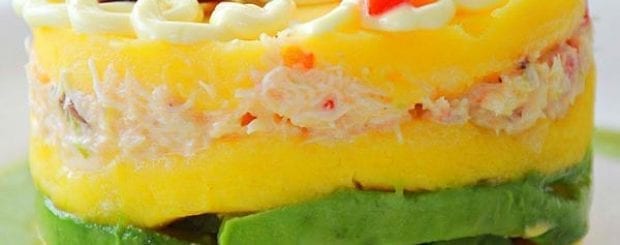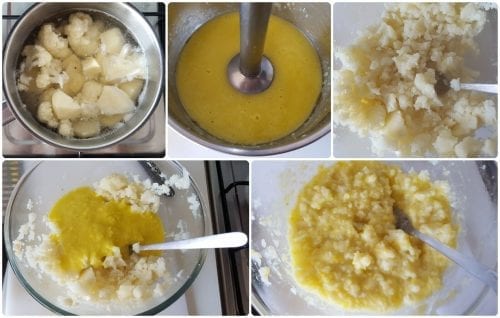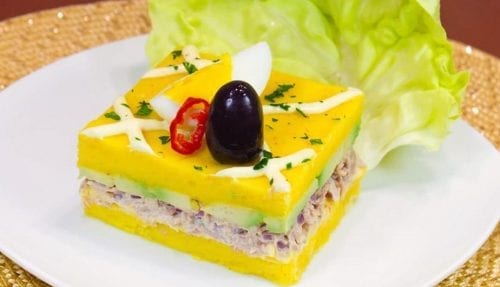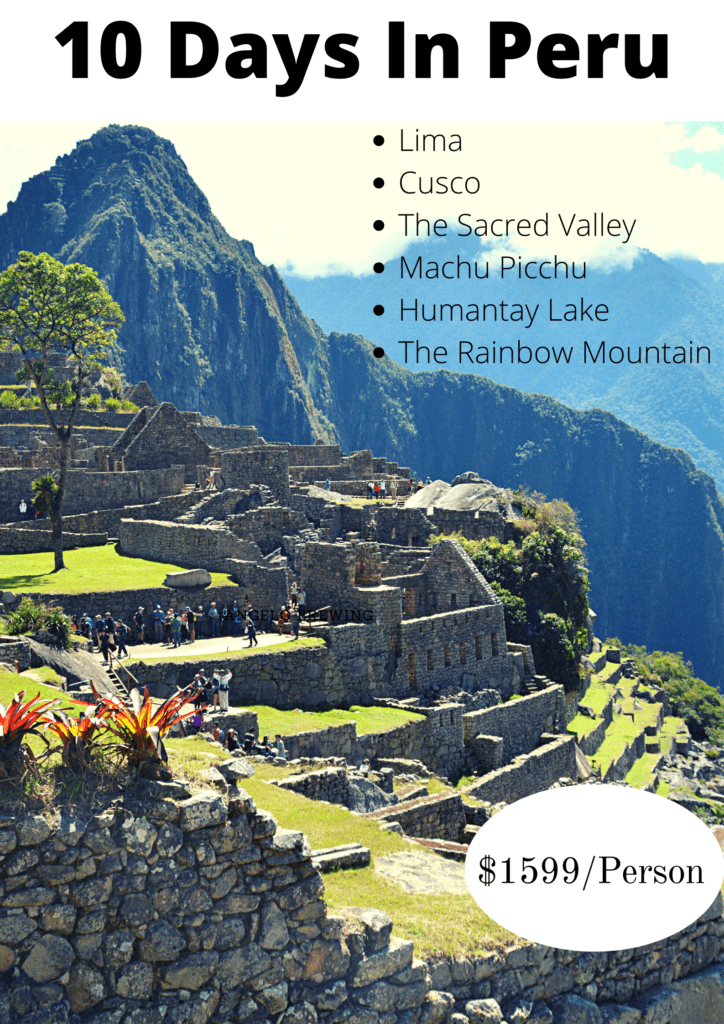How to Make Peruvian Causa
James Bustamante is Native to New York but born to Peruvian parents. He has been traveling throughout Latin America since early 2003 and finally made his home in Peru. James has made his way by eating and traveling through almost every country in Central and South America.
Last Updated on February 19, 2024 by James Bustamante
Peruvian Causa is a typical dish the locals enjoy; it often appears during lunchtime as an entree.
This dish uses the delicious Peruvian yellow potato as a base. Thanks to its grainy texture, it makes it a nearly perfect potato for mashing.
It is a delicious dish that can be quickly prepared and is stuffed with just about anything from chicken to shrimp and tuna, topped with stir-fried beef (Lomo Saltado), and even octopus. Causa is one of the most versatile and easy-to-make Peruvian dishes; just about anyone can assemble this local delicacy.
History of Peruvian Causa
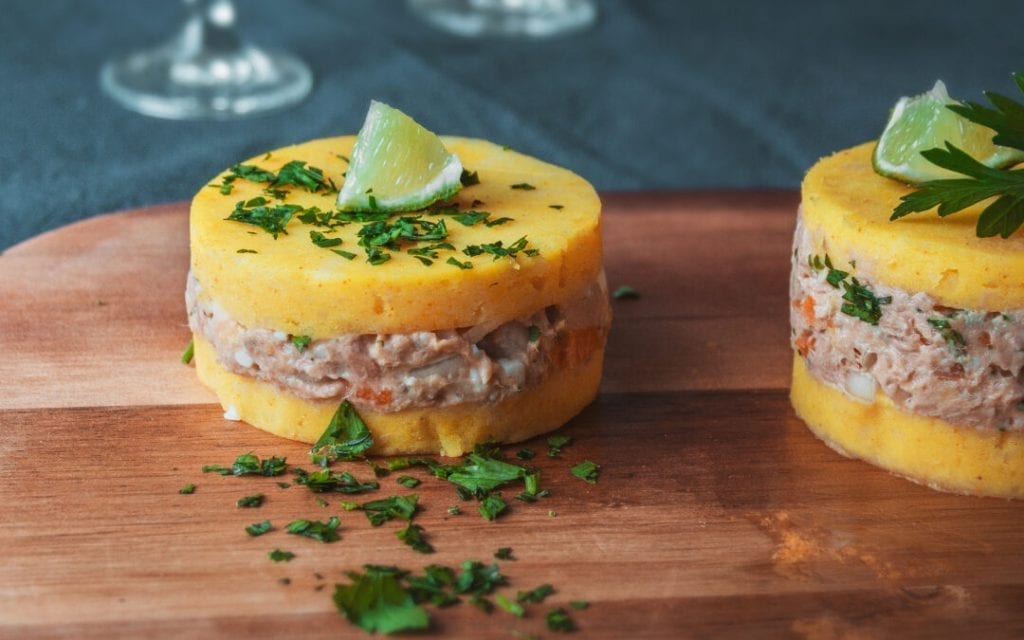
The origin of the Peruvian Causa name has been up for debate. There are mainly two theories on how one of the flagship Peruvian dishes started. Many consider the name to come from Jose de San Martin, an Argentine general and the primary leader of the southern and central parts of South America’s successful struggle for independence from the Spanish Empire.
To Peruvians, the story behind the food is almost as important as the food itself, and learning about it should be part of everybody’s Machu Picchu Travel plans.
The story states that during the fight for Peruvian independence from the Spanish, he asked for support from Peruvians and offered food in return. There was not a lot of food available at the time other than potatoes native to Peru, limes, and a few spices. The resulting dish was correlated to the word “Causa,” which translates to “a cause” in English.
The second theory on the origin of Causa name appears to come from the Quechua word “Kawsay,” which translates to “food.”
Many Peruvian dishes are said to get their name from the native Quechua language of this region, so there might be something to this.
Whichever it is, the Peruvian Causa is a dish so near and dear to the locals (as well as the word commonly used to depict a friendship or a friend) that it rivals the Machu Picchu hike in Peruvian nationalism.
It is a delicious dish that can be quickly prepared and is stuffed with just about anything from chicken to shrimp, crab, and even octopus.
How to Make Peruvian Causa
Estimate Cost : USD
Time Needed : 00 days 00 hours 30 minutes
Peruvian Causa is an easy to make dish that can be stuffed with a variety of ingredients. The recipe below focuses on the potato mash and layers, making it very easy to follow and get great results.
Due to some of the ingredients Peruvian Causa can be quite spicy, however if you make an adjustments the dish will be quite mild.
You will need a few pots and pans for the potatoes, a blender or food processor as well as a few knife skills. This Peruvian causa recipe is sure to hit that Peruvian food itch you’ve been craving.
Boil and Mash The Potatoes
We begin by making the potato mash for the Peruvian Causa. First we’ll need to boiled the potatoes and then mash them just like if we were going to prepare mashed potatoes. It is important to not leave any lumps whatsoever in the potatoes

Mixing The Ingredients for The Yellow Sauce
Now we move on to make the yellow sauce for our Peruvian Causa. To the potato mash we made, add the vegetable oil and mix well until the mash is nice and smooth. Now add the lime juice, salt, pepper to taste, and the yellow hot pepper mash. Once all these ingredients are added, mix.

Layering and Shaping Peruvian Causa
Once the dough is manageable and not coming apart, go ahead and try to shape it into a square, rectangle, or circle. To do this you might want to spread the potato dough onto a flat surface. As you spread it make sure to five it the thickness you prefer. Lastly, we can go ahead and cut the dough into shapes with cookie cutters, or you can always use a glass.

Plating your Peruvian Causa
Place your Peruvian Causa shape on a dish. Over the first layer place the hard boiled egg slices, then place the black olives over the eggs. Now slice the onion thinly, season it with lime, salt and pepper with a few drops of olive oil. Lastly place the onions over the eggs. To finish, place another layer of Peruvian Causa over the filling to close it out. You can decorate the dish with a piece of lettuce and olives.

Tools
- Items
* Knife
* Food-processor
* Stove for cooking the potatoes
* Pot for boiling potatoes.
* Cookie Cutters or a Glass for cutting the Potato mash.
Materials
- Peruvian Causa Ingredients:
* ¾ kilogram of White Potato (any kind will do but preferably Peruvian).
* ½ kilogram of Yellow Peruvian Potatoes.
* ¼ of an Onion
* ½ cup of vegetable oil.
* 2 Tablespoons of Peruvian yellow hot pepper paste (Place in food processor and add some of the hot pepper seeds for spice).
* ¾ of a cup of lime juice (Preferably Peruvian “limon acido” ).
* 1 pinch of Salt and Pepper (to taste).
1 head of lettuce (romaine or iceberg are fine).
If you’d like to learn more about Peruvian dishes and have a Machu Picchu tour while you’re at it, make sure to book a culinary class with us within your all inclusive Peru tour package.
If you’d like to watch a professional make Peruvian Causa before attempting to do so yourself, below we’ve added a video of Bratzo Vergara. He is a chef at the Peruvian restaurant known as Tanta.
Frequently Asked Questions on How to Make Peruvian Causa
How long does it take to prepare Peruvian Causa?
It can take anywhere from 20-30 minutes.
Is Peruvian Causa a very spicy dish?
The spiciness level of the dish varies, it heavily depends on the amount of seeds you placed into the mix. It can go from very spicy to a rather mildl level.
Is Peruvian Causa served hot or cold?
Peruvian Causa is usually served at room temperature or on the colder side. There are sauces that can go over the dish which may be served warm but never hot.
What kind of filling is used in Peruvian Causa?
The filling varies greatly. It can be stuffed with crab meat, chicken, tuna avocado, octopus, etc. As well as combinations of fillings.
